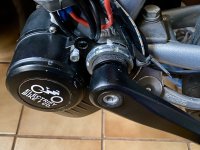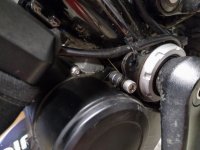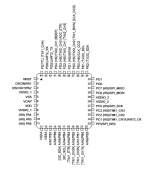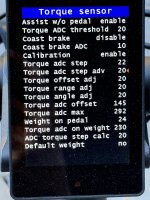What's the purpose of the epoxy block? To prevent the motor from hammering on the down tube if the BB nut comes loose?No, the only bike with the fixing block is the hard-tail which has the TSDZ2B 48v mid-drive, the others with the TSDZ2 36v mid-drives being full suspension have the epoxy putty wedge pieces and theTSDZ2B embossed fixing plates, could 3D print the wedge pieces but a bit of a faff as the epoxy putty just forms to the right shape. Zoom in on the first photo with the under-slung battery and you see the grey wedge piece. Yes the motor pivots to the down tube. I have used Loctite red pipe thread sealant which not a high strength thread lock to stop the nut coming loose.
Last week I moved my TSDZ2 motor from my Raleigh Mtn Tour Seneca to a new/used hardtail Raleigh M80. I did not install the chain stay fixing block. It's nice to keep the kickstand. Only the BB nut received blue Loctite. I painted whiteout on the BB nut so I can see at a glance if it has loosened or not.









